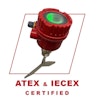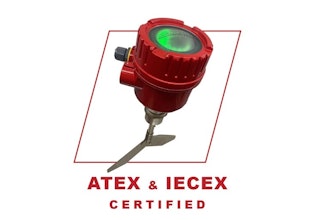There are several reasons we buy for our own use; we may feel an item can save us time, money or labor/repair costs, or maybe we like the design or certain safety features. Well, the reasons are often the same in the manufacturing environment. Unfortunately, unless you know exactly what you want, you may to suffer through a sales call which can take an hour of your day.
Nick Bowers, maintenance and production manager at Cooper Inc., shared that “on an average day, I spend about three hours talking to industrial sales reps. I can honestly say that only a rare few have anything worthwhile to share. I want to give them the benefit of the doubt but I’ve gotten to the point where I will only see existing vendors. It’s sad but I just don’t have the time to wade through all the junk and get to what is important.”
Getting to what is important can indeed be difficult. Industrial sales reps who are effective understand the time limitations of their prospects and respect their audience. Often their pitch is geared around how their product is going to save time, money and labor. Effective companies have a proven record of accomplishment and can offer references, but this requires time to sit and listen, time that manufacturing managers just cannot afford.
One effective way to decide if you want to learn more about a product or service is to implement purchasing specifications. The federal government and municipalities have been using the bid system for many years, and while in many instances the bid system is predicated on price and not performance, that practice is slowly changing to where purchasing specifications are built around performance requirements and not price.
To understand the performance requirements, you first must identify the need of an item. The need is centered around reducing downtime, parts replacement, and labor costs through improved performance. The cause of those issues can be identified through records and discussions with the line operators and maintenance technicians, and once established, then standards are identified as basic performance levels.
After these standards have been determined, price, packaging, delivery, and value-added services can be requested. Guardian Industries’ Glen Kalgren, global director of the Diamond Guard Product Line, said, “We have a pretty good understanding why we suffered from unscheduled downtime in the past. We now take an active role in purchasing replacement parts and MRO items based on performance and longevity and not just on lowest price. Implementing purchasing specifications saves time and helps zero in on the things we need to keep the lines running to full capacity.”
Not long ago, a major manufacturer of appliances changed light-bulb vendors. The new vendor promised a twenty-five percent reduction in cost of the same wattage bulb. The new bulbs came in but were packaged in such a way that over thirty percent were broken during shipping. The purchasing department saved money for the cost of each bulb, but the indirect cost associated with replacing the broken bulbs far exceeded the savings.
The maintenance team and the purchasing department put in place a purchasing specification that included packaging requirements and a refund requirement for any bulb broken during transit, as well as several other performance features. The purchasing specification helped identify a third vendor that saved the company even more by providing a better bulb, and completed energy audits as a value added extra.
Standards of Performance
Implementing standards is a sound practice to help drive increased reliability. One organization that has established standards for performance is the American Society for Testing and Materials, also known as ASTM International. ASTM, formed in 1898, is a global forum for the development of consensus standards and is considered one of the largest voluntary standards developing organizations in the world.
ASTM currently has over 11,000 standards that can be found in the 77-volume Annual Book of ASTM Standards. It offers an online index of 11,000 of these standards, which enables search of 130 varying industry areas. The ASTM Web site (www.astm.org) allows users to search by keyword or standard number, and viewers can access the titles and scopes of all ASTM standards. Your vendor should be well versed in their particular standards for their products.
Submission of the Proposal from the Vendor
It is essential that the submission be as painless as possible for all parties involved. The purchasing department does not want to pour through an endless stack of papers to get to the significant area, nor does the prospective vendor want to submit the proposal that may hurt their chances of winning the business just because the format was difficult to work with.
The easiest format that the procurement team can request is in table form with numeric or short answers for the prospective vendor to fill in. This makes the submission process easy, but more importantly it makes the selection process very easy. The data can be stored in a spreadsheet and quickly analyzed.
Identifying the various opportunities for failure is the first step. Once that is established, the next step is identifying the various performance standards that will have a direct relationship to the failure. Examining the performance levels of various items using ASTM methods is a good gauge for beginning the selection process. Using a spread sheet to chart the various values is one way to organize the data.
It is sound practice to try a new product in a designated area of the facility and monitor the actual performance, and only after certain expectations are met or exceeded should a given product be considered for plant-wide purchasing. By following the basic steps of the procurement process, increased cost savings can be realized.
It is important that the engineering, maintenance, and purchasing departments become familiar with FMEA and ASTM standards. By pressing vendors to deliver more in the way of value and performance, increased plant reliability and decreased cost are almost guaranteed.



















